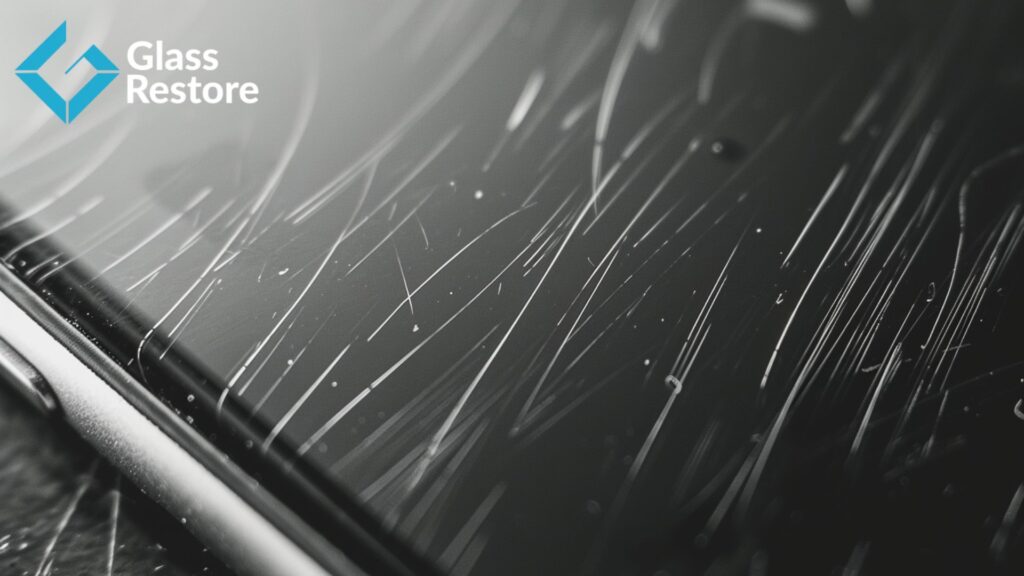window scratch remover can be a frustrating problem, whether it’s your home windows, car windows, or even glass doors. Not only do they affect the aesthetic appeal of the surface, but they can also obstruct your view and make the glass harder to clean. Luckily, window scratch removers can help restore your windows to their original clarity, whether you’re dealing with light surface scratches or deeper marks.
In this article, we’ll discuss the causes of window scratches, the best methods for removing them, and tips for preventing further damage to your windows.
What Causes Scratches on Windows?
window scratch remover are typically caused by various factors, including:
- Debris: Small particles of sand, dirt, or grit can scratch the surface of the glass, especially when it’s wiped or cleaned.
- Improper Cleaning: Using abrasive cloths or rough cleaning tools can leave scratches on the glass surface.
- Accidental Impact: Bumping into windows with sharp objects, or using hard tools near the window, can create scratches.
- Environmental Factors: Natural elements, such as tree branches or flying debris, can also cause scratches on windows over time.
While some scratches may be superficial, others can affect the clarity and function of your windows, which is why it’s important to address them promptly.
Types of Window Scratches

Not all window scratches are the same. They can vary in depth and severity, and identifying the type of scratch can help determine the best removal method.
1. Surface Scratches
Surface scratches are light and only affect the outermost layer of the glass. These types of scratches are often caused by dirt, dust, or minor abrasions during cleaning. Surface scratches are the easiest to remove and don’t typically compromise the structural integrity of the glass.
2. Deep Scratches
Deep scratches penetrate further into the glass and are often caused by larger debris or accidental impacts. These types of scratches are harder to repair and may require more specialized methods or professional intervention.
3. Scratches from Hard Water
In areas with hard water, mineral deposits from water can build up on windows, leaving behind visible scratches or stains. These are often harder to remove because they involve mineral buildup, not just surface damage.
How to Remove Scratches from Windows
There are several methods you can use to remove scratches from windows, depending on the severity of the damage. Here are some common techniques:
1. Using a Glass Polishing Kit (For Surface Scratches)
Glass polishing kits are a popular option for repairing light scratches on windows. These kits typically include polishing compounds and special pads to gently buff out the scratch and restore clarity to the glass.
Materials Needed:
- Glass polishing kit (includes polishing compound and pad)
- Microfiber cloth
- Water
How to Use:
- Clean the window thoroughly to remove any dirt or dust.
- Apply a small amount of the polishing compound to the pad provided in the kit.
- Use the pad to rub the compound into the scratched area, working in small circular motions.
- Continue polishing until the scratch becomes less noticeable or disappears.
- Wipe away any excess compound with a microfiber cloth and clean the area with water.
This method is particularly effective for light, surface-level scratches on your windows.
2. Using Toothpaste (For Minor Scratches)
Toothpaste, especially non-gel varieties, can act as a mild abrasive to buff out light scratches from windows. This method is quick, affordable, and effective for small, superficial scratches.
Materials Needed:
- Non-gel toothpaste
- Soft cloth or microfiber cloth
- Water
How to Use:
- Apply a small amount of non-gel toothpaste directly onto the scratched area.
- Use a soft cloth or microfiber cloth to rub the toothpaste into the scratch in circular motions.
- Continue to rub the toothpaste gently for 1-2 minutes to work out the scratch.
- Wipe the area clean with a damp cloth and rinse the window with water.
This is a great DIY method for minor, light scratches on window glass, though it may not be effective for deeper scratches.
3. Using Baking Soda Paste (For Surface Scratches)
Baking soda is another mild abrasive that can be used to remove light surface scratches. When mixed with water, it creates a paste that can gently buff away surface damage.
Materials Needed:
- Baking soda
- Water
- Microfiber cloth
How to Use:
- Mix a small amount of baking soda with water to form a thick paste.
- Apply the paste directly onto the scratched area.
- Use a microfiber cloth to rub the paste into the scratch, working in small circular motions.
- Continue until the scratch is less noticeable.
- Wipe away the excess paste with a damp cloth and rinse with water.
Baking soda paste works similarly to toothpaste and is a great option for dealing with minor scratches.
4. Using Cerium Oxide (For Deeper Scratches)
For deeper scratches, cerium oxide is a powerful polishing compound that is often used by professionals to restore glass surfaces. It is effective in removing both surface scratches and deeper gouges.
Materials Needed:
- Cerium oxide polishing compound
- Polishing pad or cloth
- Water
How to Use:
- Clean the window to remove dust and debris.
- Mix cerium oxide with water to form a slurry (check the product instructions for the correct ratio).
- Apply the slurry to the scratched area.
- Use a polishing pad or cloth to rub the slurry into the scratch, working in small, circular motions.
- Continue polishing until the scratch becomes less visible or disappears.
- Wipe away excess slurry with a microfiber cloth and rinse with water.
Cerium oxide is effective for removing deeper scratches, but it requires careful application to avoid further damage to the glass.
5. Using a Pumice Stone (For Stubborn Scratches)
For stubborn scratches that don’t respond to the methods above, a pumice stone can be used as an abrasive tool to gently sand the scratch down. Be cautious when using this method, as excessive pressure can damage the glass.
Materials Needed:
- Pumice stone
- Water
- Microfiber cloth
How to Use:
- Wet the pumice stone and the scratched area of the window.
- Gently rub the pumice stone over the scratch, using light pressure.
- Continue rubbing until the scratch is reduced.
- Wipe away excess water and clean the area with a microfiber cloth.
This method should only be used for deeper, stubborn scratches and requires extra care to avoid further damage to the glass.
When to Seek Professional Help
While the methods above can be effective for minor to moderate scratches, some scratches may be too deep or severe to be repaired effectively at home. In these cases, it’s best to seek professional help.
You should consider professional assistance if:
- The scratch is deep or located in a critical area (e.g., the driver’s line of sight in a car window).
- The scratch is part of a larger crack or chip that may compromise the window’s structural integrity.
- The damage is widespread or affects multiple windows.
- You are unsure how to properly handle the repair.
Professional glass repair services have the tools, experience, and expertise to assess the damage and determine whether repair or replacement is the best course of action.
How to Prevent Future Scratches
Prevention is always better than repair. Here are some tips to avoid scratching your windows in the future:
- Use soft, clean cloths when cleaning your windows to avoid abrasives.
- Keep windows clean by regularly washing them to remove dirt and debris that could scratch the glass.
- Replace worn-out wiper blades on your car to prevent scratches from old or damaged blades.
- Avoid using harsh cleaning agents that could scratch the surface.
Conclusion
Removing scratches from windows is possible with the right tools and techniques. Whether you’re dealing with light surface scratches or deeper gouges, methods like using toothpaste, baking soda, or cerium oxide can effectively restore clarity to your windows. For deeper damage, seeking professional help is often the best option to ensure a safe and permanent solution.
